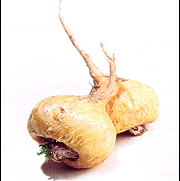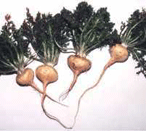  |
Maca is a hardy perennial plant cultivated high in the Andes Mountains, at altitudes from 8,000 to 14,500 feet. It has one of the highest frost tolerances among native cultivated species. Maca has a low-growing, mat-like stem system, which can go unnoticed in a farmer's field. Its scalloped leaves lie close to the ground and it produces small, self-fertile, off-white flowers typical of the mustard family to which it belongs. The part used is the tuberous root, which looks likes a large radish (up to 8 cm in diameter) which is usually off-white to yellow in color. |
|
The Retreat | The Shaman
| The Healing Ceremonies | Photographs
|
Contact Carlos at AYAHUAYRA
to request more information
carlos@ayahuayra.org
![]()